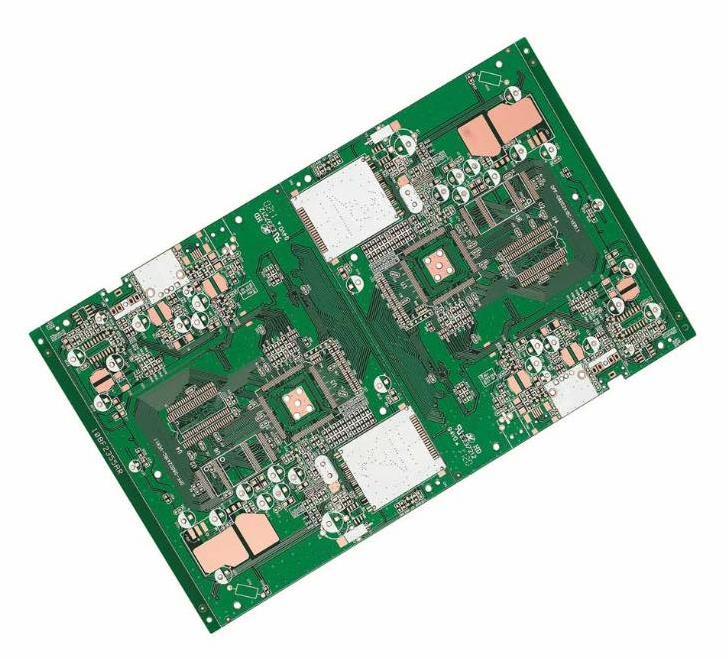Interpret the four basic characteristics of RF circuits from four aspects: RF interface, small desired signal, large interference signal, and adjacent channel interference, and give important factors that need special attention in the PCB board design process.
1. RF interface of RF circuit simulation
Conceptually, wireless transmitters and receivers can be divided into two parts: fundamental frequency and radio frequency. The fundamental frequency includes the frequency range of the input signal of the transmitter and the frequency range of the output signal of the receiver. The bandwidth of the fundamental frequency determines the fundamental rate at which data can flow in the system. The base frequency is used to improve the reliability of the data stream and reduce the load imposed by the transmitter on the transmission medium at a given data rate. Therefore, a lot of signal processing engineering knowledge is required when designing a fundamental frequency circuit on a PCB board. The radio frequency circuit of the transmitter can convert and upconvert the processed baseband signal to the designated channel, and inject this signal into the transmission medium. Conversely, the receiver's RF circuitry can take the signal from the transmission medium and convert and down-convert it to the fundamental frequency. Transmitters have two main PCB design goals: They must transmit a specific amount of power while consuming as little power as possible. The second is that they cannot interfere with the normal operation of transceivers in adjacent channels. As far as receivers are concerned, there are three main PCB board design goals: first, they must accurately reproduce small signals; second, they must be able to remove interfering signals outside the desired channel; very small.

2. Large interference signal in RF circuit simulation
The receiver must be sensitive to small signals, even in the presence of large interfering signals (blockers). This occurs when trying to receive a weak or distant transmission while a nearby powerful transmitter is broadcasting on an adjacent channel. The interfering signal may be 60-70 dB larger than the desired signal, and can block normal signal reception in a way that a large amount of coverage occurs at the input stage of the receiver, or the receiver generates an excessive amount of noise at the input stage. If the receiver is driven into the nonlinear region by the interferer during the input stage, the two problems mentioned above will occur. To avoid these problems, the front end of the receiver must be very linear. Therefore, "linearity" is also an important consideration when designing a receiver on a PCB board. Since the receiver is a narrowband circuit, the nonlinearity is measured as "intermodulation distortion". This involves driving the input signal with two sine or cosine waves that are close in frequency, in band, and then measure the product of their intermodulation. In general, SPICE is a time-consuming and expensive simulation software because it has to perform many loops to get the required frequency resolution to understand the distortion.
3. Small expected signal for RF circuit simulation
The receiver must be very sensitive to detect small input signals. Typically, the input power to the receiver can be as small as 1 μV. The receiver's sensitivity is limited by the noise generated by its input circuitry. Therefore, noise is an important consideration when designing a receiver on a PCB board. Furthermore, the ability to predict noise with simulation tools is essential. Figure 1 shows a typical superheterodyne receiver. The received signal is filtered and the input signal is amplified by a low noise amplifier (LNA). This signal is then mixed with a local oscillator (LO) to convert the signal to an intermediate frequency (IF). The noise performance of the front-end circuit mainly depends on the LNA, mixer and LO. While using traditional SPICE noise analysis it is possible to find LNA noise, it is useless for mixers and LOs because noise in these blocks can be heavily affected by the large LO signal. Small input signals require the receiver to have very large amplification, usually as high as 120 dB. At such high gains, any signal coupled from the output back to the input can cause problems. An important reason for using a superheterodyne receiver architecture is that it distributes the gain over several frequencies to reduce the chance of coupling. This also makes the frequency of the LO different from that of the input signal, preventing large interfering signals from "contaminating" the small input signal. For different reasons, in some wireless communication systems, direct conversion or homodyne architectures can replace superheterodyne architectures. In this architecture, the RF input signal is directly converted to the fundamental frequency in a single step, so most of the gain is in the fundamental frequency and the LO is the same frequency as the input signal. In this case, the influence of a small amount of coupling must be understood and a detailed model of "stray signal paths" such as coupling through the substrate, package pins and bond wires must be established (bondwire) coupling, and coupling through power lines.
4. Adjacent channel interference in RF circuit simulation
Distortion also plays an important role in transmitters. The nonlinearity created by the transmitter at the output circuit may spread the bandwidth of the transmitted signal across adjacent frequency channels. This phenomenon is called "spectral regrowth". Before the signal reaches the power amplifier (PA) of the transmitter, its bandwidth is limited; but "intermodulation distortion" within the PA causes the bandwidth to increase again. If the bandwidth is increased too much, the transmitter will not be able to meet the power requirements of its adjacent channels. When transmitting digitally modulated signals, it is practically impossible to use SPICE to predict spectral regrowth. Because transmission operations of about 1000 digital symbols must be simulated to obtain a representative spectrum and also need to incorporate high frequency carriers, these make SPICE transient analysis impractical on the PCB board.